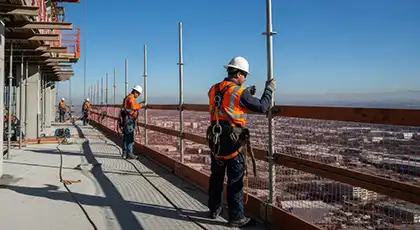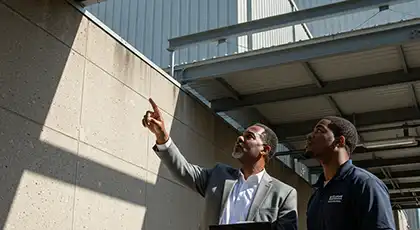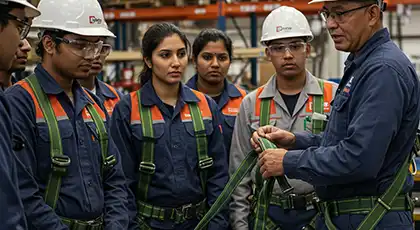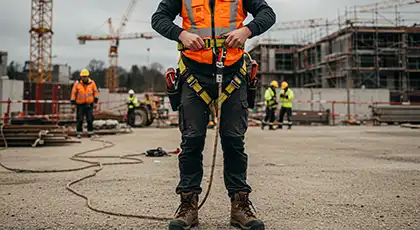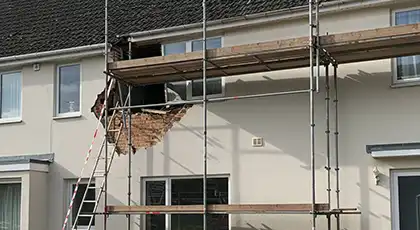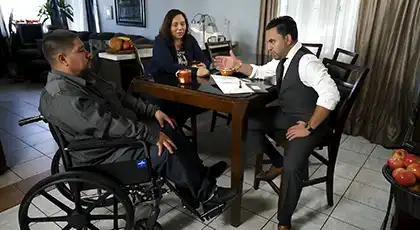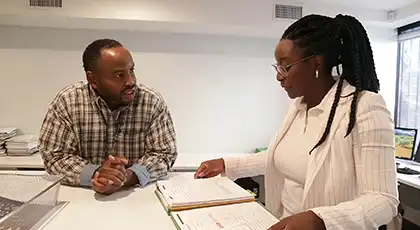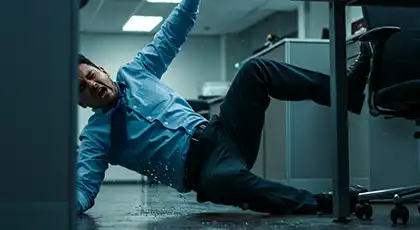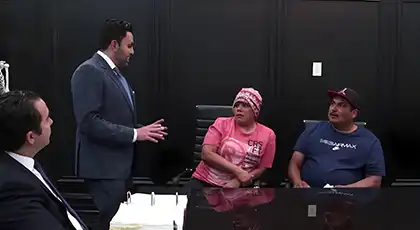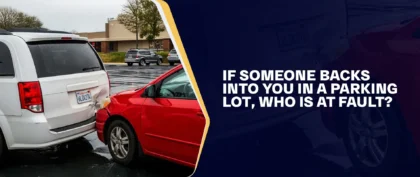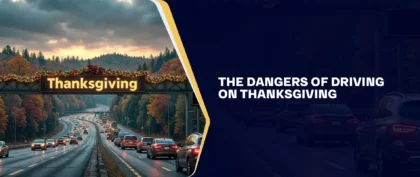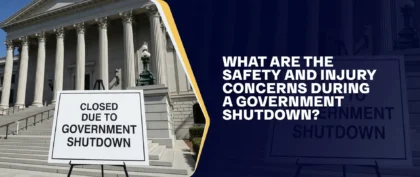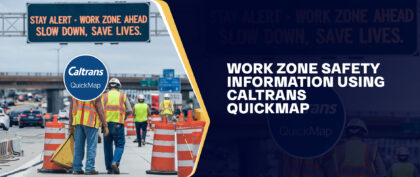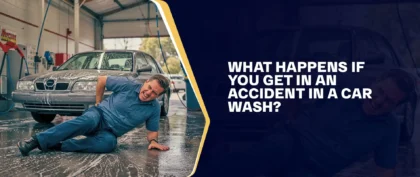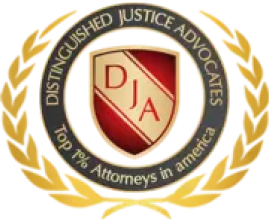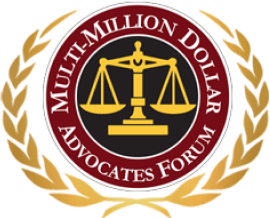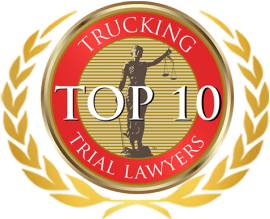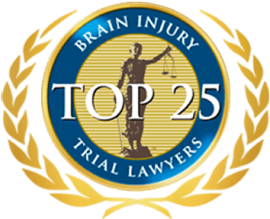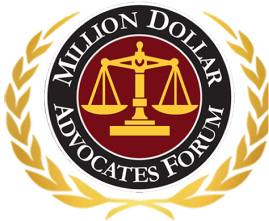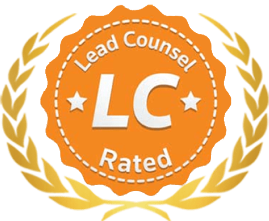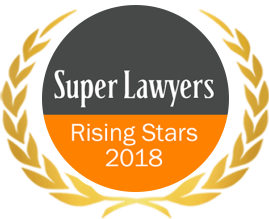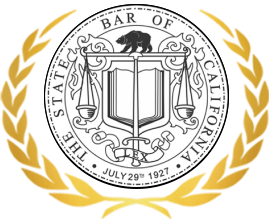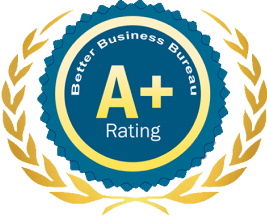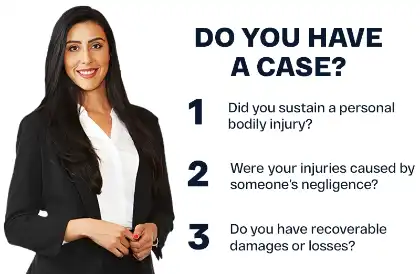TL;DR: Employers are legally responsible for ensuring that their workplaces are free of fall hazards. If they fail to address these risks adequately and an accident occurs, they may face liability.
Table of Contents
In most cases, employers are the ones responsible for ensuring the workplace is safe from fall hazards. They must identify dangers, provide proper safety equipment, and train employees to prevent workplace accidents. When they neglect these responsibilities, injured workers may be entitled to workers’ compensation and, in some situations, may pursue additional legal claims against third parties or noncompliant employers.
Key issues include how the Occupational Safety and Health Administration (OSHA) and Cal/OSHA enforce fall safety rules, the legal duties employers must follow, and what injured workers can do to protect their rights and seek damages.
Here’s a quick summary of your possible legal options after a fall:
- Workers’ Compensation — Covers medical bills, lost income, and disability benefits.
- Personal Injury Claims — Claims for personal injuries may be filed against third parties (contractors, property owners, product manufacturers), depending on the circumstances.
- Wrongful Death Claims — The right to pursue wrongful death is available to eligible surviving family members in fatal cases.
- Employer Exception Cases — California law allows direct lawsuits against employers under certain circumstances.
Our work injury lawyers are available to discuss your legal options if you have questions about such incidents. Contact us at (888) 488-1391 for a free initial consultation.
Now, let’s dive into what OSHA says about fall safety, what your employer is supposed to do, and what happens when they don’t. We’ll also discuss your workers’ rights and the steps you can take if you or someone you love has suffered an injury from a fall at work.
What Are Employers Legally Required To Do To Prevent Falls?
In California, Cal/OSHA sets and enforces most workplace safety rules, but federal OSHA still covers some workers, like those on federal job sites or in maritime jobs. Both agencies aim to prevent fall injuries by requiring employers to plan ahead, use safety equipment, and train workers properly. The table below shows key safety duties and the California laws that support them.
| Legal Duty | Details | Relevant Regulation |
| Inspect for fall hazards. | Regularly assess the workplace for potential fall risks. | Labor Code §6400 |
| Install fall prevention equipment. | Use guardrails, nets, and other physical barriers where needed. | Title 8 CCR §3210 |
| Provide personal protective equipment (PPE). | Supply harnesses, lanyards, and other fall protection devices appropriate to the task. | Title 8 CCR §1670 |
| Train employees. | Educate workers on identifying hazards and using fall protection correctly. | Labor Code and Cal/OSHA training rules. |
Falls may occur when safety rules are not in place. If you suffered injuries because your employer failed to follow safety rules, you have the right to speak up and seek legal help.
Knowing your employer’s responsibilities can help you recognize when they fall short. If they do, you may be able to seek justice and compensation if their safety rule violations led to your fall.
What Employers Must Do To Prevent Falls At Work
Preventing falls takes more than just having safety gear available. Employers must take specific steps before work begins, including identifying fall risks, providing equipment, and ensuring workers are properly trained. The following sections explain how employers should plan for safety and meet OSHA and Cal/OSHA requirements.
How Employers Should Plan For Fall Safety
Creating a safe work environment starts with identifying where fall hazards may occur. Employers must assess the job site, plan, and take action before work begins. Here’s what responsible planning should include:
- Identify High-Risk Areas — Employers should examine rooftops, scaffolding, ladders, and slippery surfaces where falls are more likely to happen.
- Install Barriers — Install physical barriers, such as guardrails and toeboards, to prevent workers and objects from falling off the edges or into open spaces.
- Assess Risks Early — Review fall risks before any task begins, so workers have proper protection in place from the start.
For example, requiring someone to install a window 10 feet high without a harness is not only careless but also violates OSHA fall protection standards. The same applies if a warehouse platform lacks proper guardrails. These are not minor oversights. They are serious safety violations that put lives at risk.
When Employers Must Provide Fall Protection Equipment
If your job puts you at risk of falling, your employer must provide you with the necessary equipment to stay safe. OSHA sets clear rules based on how high off the ground you’re working and your type of work.
Here’s when fall protection is required:
- At 4 feet in general industry jobs.
- At 5 feet in the shipyards.
- At 6 feet on construction sites.
- At 8 feet for longshoring operations.
After identifying these risks, your employer must provide the right protection. That could include:
- Guardrails and toeboards to block falls from edges or openings.
- Fall arrest systems, like harnesses, lanyards, or safety nets, can help stop you if you fall.
- Controlled access zones in areas where traditional fall protection isn’t possible, with safety monitors nearby.
- Safe ladders that have been inspected and approved for use.
- Travel restraints, such as harnesses connected to secure anchor points.
- Work positioning systems that let you stay secure while using both hands for the job.
You have a right to this protection. If you’re working near an edge without a harness or using a worn-out ladder, employers are legally required to give you the tools and training to do your job safely.
What Are The Four Fall Protection Methods Employers Can Use?
Your employer has more than one way to protect you from falls, and they must choose the method that fits your job. OSHA recognizes four main ways to reduce fall risks. Knowing how each one works helps you spot when your workplace falls short.
- Fall Elimination — An effective protection method is removing the hazard altogether. If you can do your task from the ground or with safer equipment, your employer should make that change. For example, lowering materials or adjusting the process might eliminate the need to work at height. Eliminating risks isn’t often possible, but it should be the first consideration.
- Fall Prevention — When it is impossible to remove the hazards, the next step is to prevent falls. Employers can install guardrails, toeboards, or barriers to block access to edges and openings. These passive systems stay in place and don’t rely on worker action.
- Fall Restraint — These systems utilize harnesses and short lanyards to restrict a worker’s movement. Their designs prevent you from reaching a fall hazard in the first place. It’s like having a leash that stops you from getting too close to the edge.
- Fall Arrest — If a fall does occur, these systems catch you before you hit the ground. They include full-body harnesses, lanyards, lifelines, and strong anchor points. Fall arrest is often the last line of defense when other methods aren’t possible.
Each of these methods has its place depending on the task, the worksite, and the level of risk.
How Often Employers Must Inspect Fall Safety Equipment
How often should a qualified person inspect fall protection equipment? Fall protection equipment works properly when it is in good condition. That’s why regular inspections are critical, and employers should not skip them.
Check your gear before every use. Inspect your harness, lanyard, and lifeline at the start of each shift for signs of wear, damage, or anything that doesn’t seem right. If equipment appears unsafe, report it promptly.
Employers are also responsible for regular inspections. OSHA requires a qualified person to inspect all fall protection systems at least once a year. Some equipment may need to be checked more often based on manufacturer guidelines. If work conditions change or new hazards emerge, employers must inspect sooner.
If no one inspects the gear or you get instructions to use damaged equipment, speak up. You have the right to safe tools on the job.
What Fall Safety Training Employers Must Provide
Training can reduce the risk of injury. You’re less likely to get hurt when you know how to spot fall hazards and use your equipment correctly. Your employer must give you proper safety training before you do any job that puts you at risk of falling.
Here’s what fall protection training should cover:
- How to Recognize Fall Hazards — You should know what to look for and how to avoid common dangers on the job.
- Company Safety Procedures — Training should cover when and how to use fall protection equipment, and what safety rules apply to your worksite.
- Proper Equipment Use — Learn how to wear, adjust, and inspect harnesses, lifelines, and other fall protection gear.
- Emergency Procedures — Workers should receive training on what to do in the event of a fall, including how to call for help and respond to injuries.
Some companies try to skip or rush through this training, which is against safety regulations. New employees must complete training before starting high-risk work. Employers should also provide refresher training regularly to make sure everyone stays prepared.
If your training was missing or incomplete, and you suffered injuries, you may have grounds for a legal claim.
Understanding The Roles Of Onsite Personnel In Fall Protection
Fall protection doesn’t just depend on equipment. It also depends on people who know what to look for and how to act when something is wrong. OSHA highlights two key roles on the job site: the competent person and the authorized person. Each plays an important part in keeping everyone safe.
The Competent Person: The Onsite Safety Leader
A competent person can recognize fall hazards and has the authority to fix them. This person is usually a site safety manager or supervisor.
Their responsibilities include:
- Inspecting fall protection systems regularly.
- Spotting and addressing unsafe conditions.
- Making sure safety gear meets OSHA standards.
- Training workers on how to use fall protection correctly.
- Stopping work if conditions are unsafe.
These are the people you go to when something doesn’t look or feel safe. They have the training and the authority to take action right away.
The Authorized Person: The Trained Worker
An authorized person is a worker who has received training to use fall protection equipment properly. They don’t inspect or manage safety systems, but they are responsible for protecting themselves and others.
Their role includes:
- Wearing and using safety equipment the right way.
- Following safety rules and instructions from the competent person.
- Reporting hazards or damaged equipment as soon as they notice them.
When everyone understands their role, fall protection works better. It’s about teamwork, preparation, and speaking up when something’s not right.
Common Fall-Protection Violations: Employer Negligence That May Put Workers At Risk
Even with clear OSHA safety rules, some employers still cut corners. When they do, workers might end up paying the price. These fall-protection violations aren’t just technical mistakes. They can cause serious injuries or even death.
Here are common fall-protection violations:
Failure To Provide Fall Protection At Required Heights
The employer must prevent falls. When they don’t follow OSHA workplace fall standards, workers may face serious and preventable dangers. Requirements differ by industry, but the consequences of ignoring them are often severe.
Here’s what failure can look like in real-world settings:
- General Industry (4 Feet) — A warehouse worker restocking inventory on a platform without guardrails or a harness falls and breaks a leg. No one provided them protection, even though the height exceeded OSHA’s threshold.
- Shipyards (5 Feet) — A marine welder is working on a scaffold near water slips due to poor lighting and no safety harness. The fall results in spinal trauma and a near-drowning incident.
- Construction Sites (6 Feet) — A roofer working on a single-story home with no fall arrest system falls to the ground. The employer failed to provide a harness or secure anchor points.
- Longshoring Operations (8 Feet) — A dock worker loading cargo from an elevated platform has no guardrails or safety nets. A misstep causes a fall into a concrete bay, resulting in multiple fractures.
Employers must also:
- Maintain and inspect fall protection equipment regularly.
- Train workers on how to use gear and recognize fall hazards.
Failing to meet these standards may lead to OSHA violations and liability in workplace injury claims. If you have concerns about fall protection or injuries in the workplace, consider consulting injury attorneys for personalized guidance.
Lack Of Proper Guardrails And Handrails
According to California regulations, guardrails must be at least 42 inches high and strong enough to support 200 pounds. Workers can fall from weak scaffolds, platforms, or elevated walkways.
In one tragic incident, a construction worker died after falling from a scaffold that lacked guardrails. He suffered a severe brain injury and didn’t survive. These kinds of accidents are preventable with proper safety measures.
If your family lost someone due to a workplace fall, you may be able to file a wrongful death or workplace fall injury claim in California.
Improper Use Of Personal Fall Arrest Systems (PFAS)
Workers must be taught how to use harnesses, lanyards, and anchor points provided by their employers. If they skip inspections or training, that’s a serious violation.
You may have a claim if faulty or misused safety gear caused your fall injury. Workplace injury lawyers can investigate the circumstances and offer legal guidance.
Ladder Safety Violations
Improper ladder use is another common cause of workplace falls. Examples include:
- Using the wrong type of ladder.
- Failing to inspect ladders for damage.
- Setting them up at the wrong angle.
- Not securing the ladder properly.
- Not providing fall protection when climbing over 24 feet.
Employers are responsible for enforcing ladder safety rules. If you sustained injuries and believe safety violations occurred, consult a lawyer for guidance.
Slip And Fall Risks Around Work Vehicles And Loading Areas
Falls on the job aren’t limited to rooftops or scaffolding. They frequently occur around work vehicles, loading docks, and warehouse ramps. These areas combine heavy equipment, elevated surfaces, and fast-moving operations, creating some of the most overlooked fall hazards in the workplace.
Workers who load, unload, or operate commercial vehicles face risks that can cause serious injuries, including fractures, spinal injuries, or even traumatic brain injuries. According to the National Safety Council (NSC) and OSHA, slips and trips in vehicle and warehouse areas are a leading cause of preventable workplace injuries.
Common Slip And Fall Hazards In Vehicle & Loading Zones
- Wet or Icy Liftgates and Truck Beds — Hydraulic liftgates, flatbeds, and trailer floors can become slick with water, oil, fuel, or debris. Even a thin film of moisture can send a worker sliding backward during loading or unloading. In colder regions or early mornings, frost and ice on metal surfaces amplify the risk.
- Sloped or Worn Loading Ramps — Ramps connecting warehouses to trailers are often metal or concrete, which can become dangerously slick from rain, spills, or grease. A worn, uneven, or unsecured ramp is a recipe for slip-and-fall incidents, especially when workers are carrying heavy loads that reduce visibility and balance.
- Warehouse Vehicle Traffic Hazards — Forklifts, pallet jacks, and other warehouse vehicles can leak hydraulic fluid or leave dust and debris in their path, creating invisible slip zones. OSHA emphasizes that housekeeping in high-traffic areas is critical for preventing accidents.
- Loose or Unsecured Materials — Shrink wrap, broken pallets, stray straps, and dropped tools are common culprits in loading dock accidents. Even small objects underfoot can cause a worker to trip, especially in low-light or high-traffic conditions.
Employer Responsibilities Under OSHA & Cal/OSHA
Employers are legally obligated to identify, mitigate, and prevent fall hazards in and around vehicle loading areas. Key responsibilities include:
- Maintain Clean And Dry Surfaces
- Dock floors, liftgates, and truck beds must be kept free of water, grease, oil, and loose materials.
- Implement a regular cleaning and inspection schedule to prevent buildup that can cause slips.
- Provide Proper Safety Infrastructure
- Install non-slip mats, anti-skid coatings, and guardrails on ramps and elevated surfaces.
- Ensure adequate lighting for early morning, evening, or warehouse operations.
- Provide wheel chocks, dock locks, and bumpers to secure vehicles and prevent sudden movement.
- Enforce PPE And Training Programs
- Train workers in slip prevention, safe lifting, and loading techniques.
- Require the use of slip-resistant footwear and, when appropriate, fall restraint harnesses.
- Conduct regular safety refreshers and document compliance with OSHA and Cal/OSHA standards.
Legal Options After A Slip Or Fall Around Work Vehicles
If you suffer a fall in a loading zone, warehouse ramp, or around a work vehicle, you may be entitled to pursue more than workers’ compensation. Depending on the circumstances:
- Workers’ compensation covers medical bills, partial lost wages, and certain disability benefits.
- Third-party injury claims may be possible if a contractor, property owner, or equipment manufacturer contributed to the hazard.
- Product liability claims can arise from defective ladders, liftgates, ramps, or traction surfaces that failed during normal use.
Document the hazard immediately, seek medical care, and consider speaking with a workplace injury lawyer who understands the unique risks of vehicle and warehouse environments. Taking action early can preserve critical evidence and support your potential right to compensation.
What Legal Options Do You Have After A Workplace Fall
A serious fall at work can make a significant impact on your life. Medical bills pile up, your paycheck may stop, and the physical recovery can take months or longer. There are legal avenues that you can explore if you have suffered a workplace injury.
Workers’ Compensation Claim
You may be eligible for workers’ compensation benefits if you suffered injuries on the job. This system covers:
- Medical expenses related to the injury.
- A portion of lost wages if you’re unable to work.
- Disability benefits for long-term injuries.
- Rehabilitation costs, if needed.
The system doesn’t assign fault, meaning you don’t need to establish that your employer was negligent. However, the process can be confusing, and you might wonder, “Do I need a personal injury lawyer for my claim?” Workers’ compensation attorneys can help you explore your available avenues for seeking damages based on your situation.
Keep in mind that workers’ comp doesn’t cover pain and suffering or emotional distress. That’s where a personal injury claim may come in. Personal injury lawyers can review your case to assess whether there are any other options available to you.
Employer Liability Exceptions
While you usually can’t sue your employer directly, there are exceptions under California law. You may have a separate legal claim if your employer:
- Intentionally caused your injury.
- Didn’t have workers’ compensation insurance.
- Acted in another role, such as a property owner or product manufacturer (dual capacity doctrine).
Personal Injury Claim
You may be able to file a personal injury case if someone other than your employer caused or contributed to your fall. This kind of claim may allow you to seek additional damages depending on your circumstances. You may have a case if a third party was involved, such as:
- Contractor or Subcontractor — They could be liable if another trade on a job site failed to maintain safety (e.g., left debris or removed fall protection).
- Property Owner — Especially true in premises liability cases where the owner is not the employer and failed to address known hazards. Obstacles or leaks can make floors dangerous. If you sustained injuries, slip-and-fall lawyers can help you understand your rights.
- Product Manufacturer — Product liability laws may apply if defective fall protection (like a harness that snapped or a scaffold that collapsed) contributed to the injury.
- Tool or Equipment Company — If a rented or supplied ladder, lift, or other equipment failed due to design or manufacturing defects, the supplier or manufacturer may be at fault.
The types and amount of damages available depend on the facts of your case. Here are some examples of the damages you may be able to pursue:
- Economic damages such as:
- Medical expenses
- Lost wages
- Lost earning capacity
- Rehabilitation costs
- Property damage
- Childcare costs
- Non-economic damages, including:
- Pain and suffering
- Emotional/mental distress
- Loss of companionship
- Loss of enjoyment of life
- Disfigurement or scarring
In fatal cases, certain surviving family members may be eligible to pursue wrongful death damages. These may include funeral and burial costs, loss of companionship, and other related losses. Wrongful death lawyers can help you file a claim and guide you through the legal process.
Workplace Fall Statistics
The NSC reports that in 2022, a tragic total of 865 workers lost their lives due to falls in the workplace. Many others suffered injuries so severe that they required extended time off work.
Not all falls happen from high places. In fact, 144 workers died in same-level falls, showing that even a simple slip or trip can turn tragic. Construction workers face the highest risk, especially those working on rooftops, ladders, and scaffolding.
About 38.5% of all construction deaths in 2023 resulted from falls. Nearly 1 in 5 workplace deaths were in construction, with slip-and-falls taking a heavy toll. Roofers and residential builders, who face elevated risks, accounted for a large portion of these tragic deaths. Around 110 workers died due to fall-related incidents in roofing, and 62 others in residential building construction.
These incidents could have significant physical, emotional, and financial impacts on workers and their families. Many of these incidents are preventable. Proper planning, training, and safety equipment can save lives. Yet, when companies fail to take these basic steps, workers are often the ones who suffer.
Frequently Asked Questions About Workplace Safety And Accidents
Below, our personal injury attorneys answer questions frequently asked by workers who are unsure of their rights after an accident at the job. To help others better understand their options, we’ve compiled those answers here. If you have any other concerns, contact us for legal guidance.
Who Is Liable For Providing Work Conditions Free From Fall Risks?
Employers are legally responsible for workplace safety, including preventing falls by identifying hazards, providing protection, and training workers. They must:
- Keep floors clean and dry to avoid common slip, trip, and fall hazards.
- Ensure ladders are sturdy and safe to use.
- Install guardrails where workers could fall.
- Follow all safety rules and give workers proper training so they know how to protect themselves.
When employers ignore safety rules, workers can get injured. An injured worker might lose income and have trouble paying for medical bills and other important expenses. In such an incident, an employee may seek guidance from a personal injury lawyer.
Do Workers Have A Right To Refuse To Do A Job If It’s Dangerous?
When your workplace becomes dangerous, you can say no to unsafe work. It’s your legal right to protect yourself. Here are some steps to consider:
- Assess the Hazard — Assess whether the situation presents an immediate danger to your health or life. If there’s a clear risk of catastrophic injury or death, you may have the right to refuse the work.
- Notify Your Employer — If you can, inform your employer about the hazard before refusing to work. Give them a chance to fix the problem. If they fail to do so, you may be justified in refusing to continue working.
- Explain Your Safety Concern — Clearly state why you believe the situation is dangerous. Your concern should rely on a reasonable judgment that others in your position would share.
- Stop Work If Necessary — You can stop working if there isn’t enough time to fix the problem, like waiting for an OSHA inspection.
- Report Retaliation Promptly — If your employer disciplines or threatens you for raising safety concerns or refusing dangerous work, file a complaint with OSHA within 30 days to protect your rights.
Remember, refusing dangerous work is a serious decision and should be based on real threats to your safety. If you face retaliation or need help navigating this process, you may seek guidance from employment lawyers. They can guide you through your rights, discuss what you can do to minimize future harm, and help you understand what steps to take.
Who Can Be Held Liable For A Work-Related Fall Injury?
If you suffered harm from a fall at work, the person or party responsible for your injury will depend on the situation. Here’s who might be held liable:
- Employers — If your injury happens due to your employer’s failure to keep the workplace safe, they are typically responsible. Most of the time, if you injure yourself on the job, you can file a workers’ compensation claim with your employer’s insurance.
- Third Parties — Sometimes, someone not employed by your company is to blame for the injury. This concept is known as third-party liability, and it could allow you to file a personal injury lawsuit in addition to pursuing workers’ comp benefits. Common examples of third-party liability include:
- Defective products that contribute to a fall, such as a faulty ladder or equipment.
- A visitor or delivery person can cause an accident by leaving something in the way or spilling a substance on the floor.
Some fall injuries may also meet OSHA’s criteria for mandatory notification. Employers must understand what injuries to report to OSHA, such as those involving hospitalization, amputation, or death. Ignoring these requirements may reflect larger safety failures that could impact liability.
If there is uncertainty about who is responsible for your injury, lawyers for accident cases can investigate the circumstances of your fall and help identify the potentially liable parties. They can help you learn whether you should file a workers’ compensation claim, a personal injury lawsuit, or both.
How Much Does A Workers’ Compensation Lawyer Cost In California?
The cost of a workers’ compensation lawyer in California depends on the specifics of your case. You may be charged more if your claim requires more case preparation, communication with multiple parties, or litigation. However, you might not have to worry about these legal costs right away.
Most workers’ compensation attorneys work on a contingency fee basis, meaning they collect attorney’s fees only if they recover benefits. Some costs connected to your case may still fall on you, irrespective of the result.
During your free initial consultation, accident lawyers can explain exactly how fees and costs work in your situation. Looking for free accident lawyer advice can be a helpful first step, but it’s important to make sure the information comes from a reliable source.
What To Do After A Workplace Accident?
Your next steps matter and typically include the following:
- Get medical attention immediately, even if you think you’re not seriously hurt. Some injuries don’t show symptoms right away.
- Report the accident to your supervisor in writing and keep a copy for yourself. Document everything you remember about the fall, including photos of the area if possible.
- Keep in mind that determining who is at fault for the accident can be complex. It’s not always the employee’s responsibility. Employers have legal duties to provide and maintain a safe work environment, and any investigation should consider all contributing factors.
- Consult a work injury attorney. They are available to provide legal guidance throughout your case.
Speak With Experienced Workplace Injury Lawyers Today
If you suffered a fall on the job, whether from a ladder, scaffold, warehouse ramp, or loading dock, you deserve to understand your legal options. Workplace falls can involve more than just workers’ compensation. In some cases, third‑party negligence, such as a contractor’s unsafe setup or a defective piece of equipment, may mean you can pursue a personal injury claim for additional compensation.
At Arash Law, our team includes dedicated workplace injury attorneys and seasoned car accident lawyers who can offer insight into cases that involve complex liability, overlapping safety regulations, and potential third‑party claims. We know how to investigate your fall, gather the evidence needed to prove fault, and advocate for the financial recovery you may deserve under California law.
Call (888) 488‑1391 or fill out our “Do I Have A Case?” form here for a free, no‑obligation initial consultation. We’ll review your case and explain your options.

